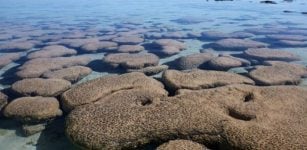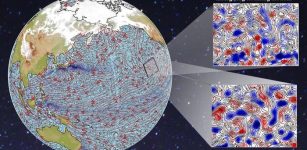Cause Of Delayed Climate Recovery After Mass Extinction – Revealed
Eddie Gonzales Jr. – MessageToEagle.com – A new study sheds light on the cause of delayed climate recovery following Earth’s most severe extinction event 251 million years ago—a discovery that will contribute to our understanding of the global climate system.
Image credit: Fir0002 – CC BY-SA 3.0
It reveals the role marine clay formation had in slowing the Earth’s return to baseline temperatures after the end-Permian mass extinction.
Earth’s climate system is generally viewed to recover in the order of 100,000 years following a significant carbon injection event such as the volcanic eruption that triggered the end-Permian mass extinction.
“Climate recovery following the end-Permian took over five million years, so we set out to investigate why temperatures stayed warm for so long,” says Ms Rauzi in a press release. Analysis of the chemical composition of rocks from New Zealand, Japan, and Norway indicates that increased marine clay formation, also known as reverse weathering, contributed to the sustained high temperatures.
Reverse weathering, which releases CO2, involves the formation of clays in the ocean and traps carbon in the ocean and atmosphere. These findings suggest that reverse weathering has played an integral role in regulating Earth’s climate.
“This study provides new insights into the Earth’s carbon-silica cycle and climate dynamics during the Early Triassic. We now have evidence that reverse weathering was crucial in maintaining high CO2 levels and temperatures, which has implications for understanding current climate processes.”
Ms Rauzi’s supervisor, University of Waikato Senior Lecturer Dr. Terry Isson, says it’s essential that we understand how Earth’s natural thermostat operates.
“Marine clay formation likely plays a critical role in regulating climate and yet there is so much we don’t understand about this process—a key focus of our research,” Dr. Isson says.
Ms Rauzi is based at the University of Waikato’s Tauranga campus and moved to New Zealand from the United States in 2022 to pursue her Ph.D. after being inspired by Dr. Isson’s line of research.
“I am interested in understanding how our planet has evolved through time. Being able to decipher what the planet was like millions or billions of years ago feels very magical,” she says.
Written by Eddie Gonzales Jr. – MessageToEagle.com Staff Writer











